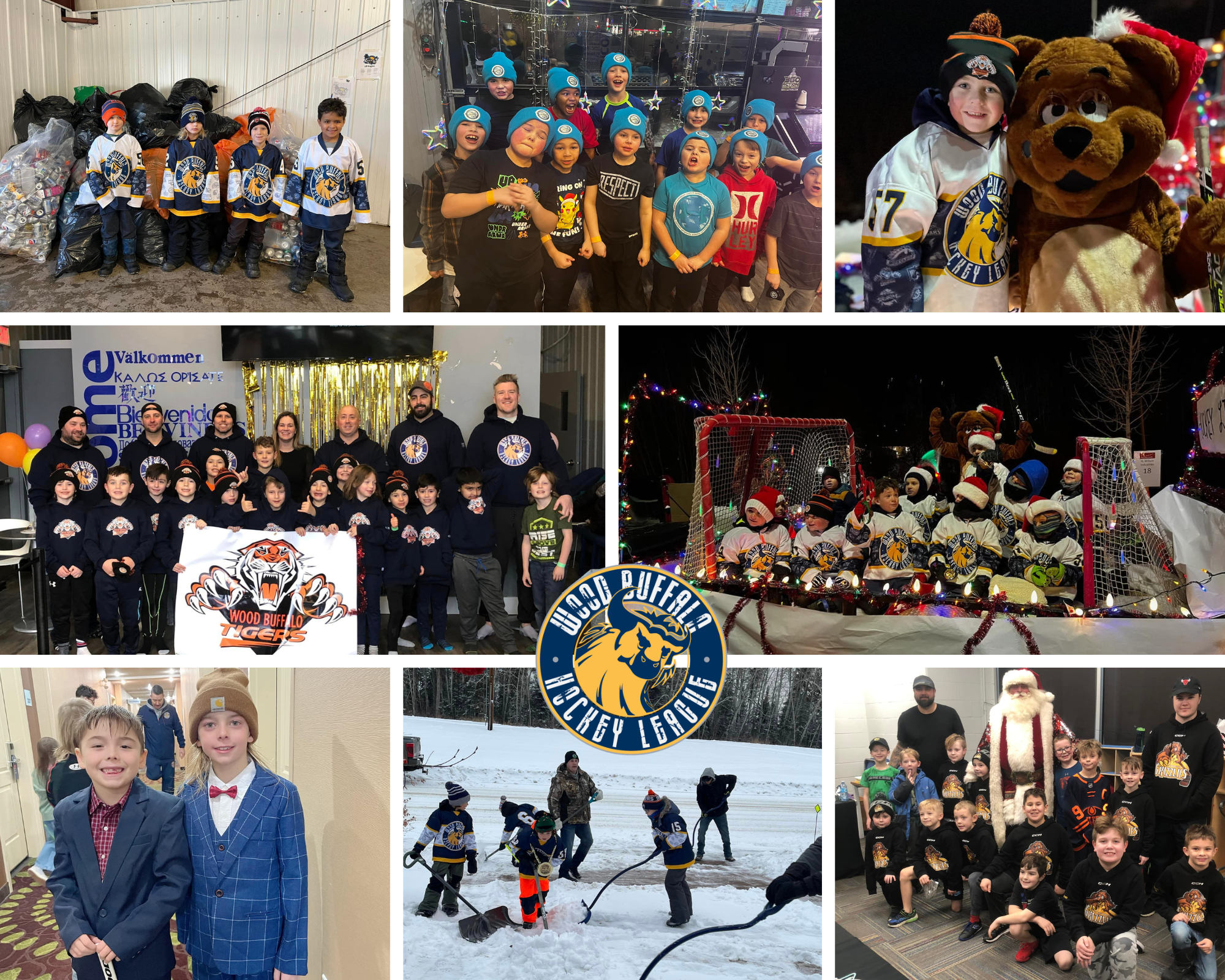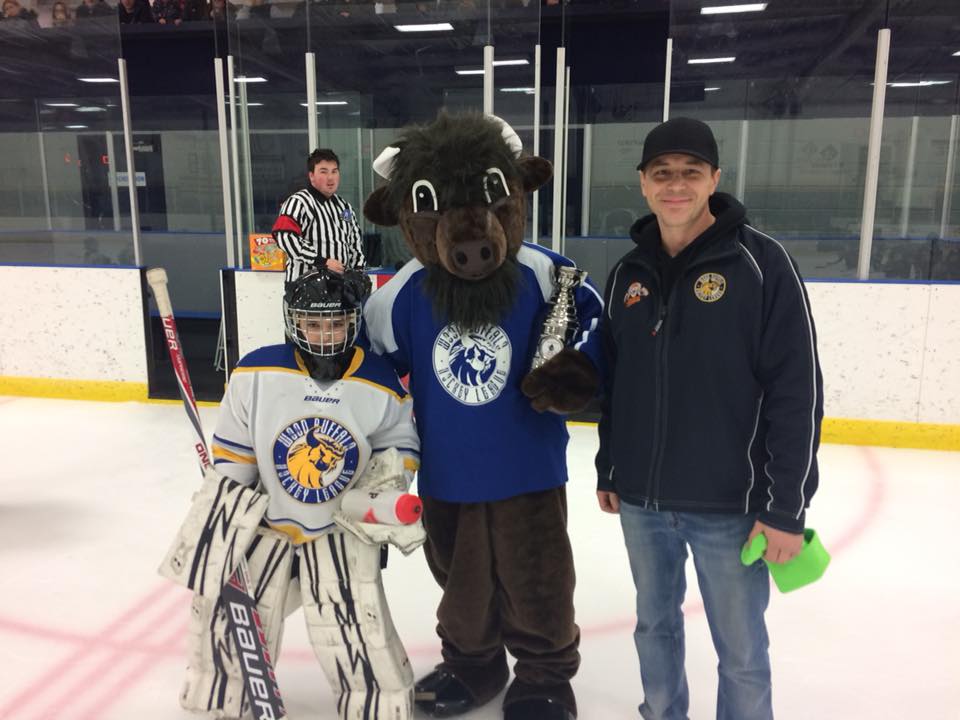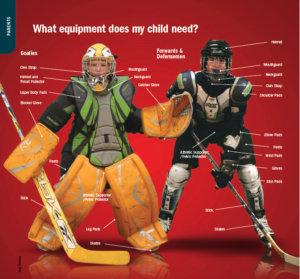U9 Division
Learn to Play

Welcome to U9 Hockey
For the 2025-26 Season U9 is open to players born in 2017 and 2018. This division includes both players moving up from U7 with a few years of experience and new players joining hockey for the first time.
FMMHA believes that all players in this age group are still in crucial learning years. We are dedicated to ensuring their experiences remain positive, fun, and exciting. Our volunteer coaches are committed to providing a supportive environment where players can continue to develop and build confidence in their individual skills.
FMMHA can accommodate up to 252 participants and aims to place no more than 18 players per team, on game days players are split into two groups to utilize both sides of the ice and maximize playing time.
Players are evaluated and placed on teams with others of similar skill levels, ranging from non-skaters to those skating independently while controlling a stick and puck.
Based on Hockey Canada’s player development model, Intro to Hockey coaches are to utilize the following percentages of time when delivering U9 practices.
- 75 % - Technical Skills
- 15 % - Individual Tactics
- 10 % - Team Tactics
- 0 % - Team Play Systems
- 0 % - Strategy
The primary goals for WBHL U9 Intro to Hockey are:
- Ensure Players Have Fun and Build Confidence in their skating and skills.
- Introduce Position Tactics such as forward, defense, and goaltending, with rotation to allow players to explore each role.
- Introduce Basic Team Play Skills such as passing.
Players are on the ice most Saturdays and Sundays, with a few additional sessions scheduled mid-week as ice allocation allows.
- 2 Pre-season Skates
- 2 WBHL Combine Testing Sessions to gauge players' levels of play
- Approximately 40 Sessions, including:
- 4 sessions with our professional development partners
- 15 game days (two 25-minute games per session)
- 20 Practice days
- 2 Special Events: Minor Hockey Week and Year-End Medal Day (includes participation trophies or medals)
- Teams will be invited to the optional Oil Sands Classic Jamboree.
Head coaches are expected to create a season plan based on players' individual skills, Hockey Canada’s development model, and FMMHA’s division goals. Practices should include a combination of small area games, drills, and scrimmages aligned with this plan.
Each team will receive goaltending equipment, which must be rotated throughout the season. Coaches will decide when players will practice as a goalie, ensuring no player is in goal every practice.
Example Practice Format (60 Minutes):
- Energizer Drill: Start with a fun game or unstructured activity to engage players.
- 3-5 Station Setup: Focus on technical skills using circuits and continuous drills.
- Finisher Drill: Conclude with a small area game, relay race, or high-energy activity.
The gameplay format is cross-ice hockey in a 4 vs. 4 setup. There are four skaters and one player in the goaltender position each shift (five players on the ice). "Intro to Hockey" uses positions like goaltender and F1, F2, F3, and F4 to introduce the concept of forwards and defense. Coaches rotate players so everyone can explore all positions.
Game Format (60 Minutes):
- Ice Divided in Half: Divider boards are used at the start of the session.
- Teams Split into Two Groups: Each group plays against opposing teams on both sides of the ice.
- 5-Minute Energizer Drill: Warm-up activity.
- 25-Minute Runtime Game: No scores displayed on the board.
- Buzzer Switch: Visiting teams switch sides for a second 25-minute game.
Note: If there are not enough players to form two full groups, teams may share players to maximize participation or use only one side of the ice.
U9 Team building

In addition to practice and game days, U9 introduces team building through community givebacks, fundraising, and participation in events like the Santa Claus Parade. Teams may also choose to travel out of town for jamborees.
U9 Hockey Frequently Asked Questions
It is important for the comfort & safety of the child that equipment is fitted and put on correctly. If you need help learning
how to put gear on your child, please reach out to the division director and a
coach will be assigned to help you dress your child.
Underwear
Wear light fitting, cool, comfortable undergarments during all games and practices. When fitting all other equipment, the same undergarments should be worn in order to get the proper sizing and wash after every use.
Jock (Jill) Strap
This piece of equipment should be fitted according to waist size and should feel comfortable for the player. Tears, especially where the two leg straps attach to the protective cup, should be properly repaired or replaced immediately. Protective cups come in sizes to suit all players.
Shin Pads
When sizing, wear loosely fitting skates in order to get the proper length of the shin pad. The cap of the shin pad should be centred on the kneecap. The bottom of the pad should fit where the foot and the leg meet at a 90-degree angle. If the pad is too short, an unprotected area above the skate will be exposed. If the pad is too long, it will restrict movement and create discomfort for the player. Shin pads are sized in inches and come in both junior and senior sizes. Cracked pads should be replaced.
Skates
Before sizing skates, check the players feet for any irregularities which
would affect the size of the skate. Players should wear the same foot hosiery
that they would in a game or practice (i.e.socks,barefoot, etc.). With the foot in an
untied skate, have the player push their foot forward so that the toes touch the
front of the skate. There should be one finger width space between the players
heel and the back of the boot. Before lacing up the skate, have the player kick
the heel back to ensure a snug fit. When completely laced, eyelets should be 1.5
to 2 inches apart. Never buy skates to grow into as this puts the player at risk of
injury and will inhibit their skating ability. Laces should never be wrapped around
the ankle as this inhibits blood flow. Skate guards should be used during
transport or when walking on non-ice surfaces. Never dry skates over direct
heat, as this may crack and damage the composition of the skate. Always
remove the souls as they may bet wet causing the rivets to rust. Always wipe the
blades after every use ensuring they are dry.
Shoulder Pads
Should protect the entire shoulder joint throughout a full range of motion. Arm pads should extend to just above the elbow to ensure full protection. Back pad should meet the top of the pants. For female players, a combination of shoulder and chest protector gives added protection to the chest area. When lifting arms, pads should not dig into the neck of the player as this may cause injury and discomfort. Check pads and straps regularly for damage.
Elbow Pads
When fitting, place the point of the elbow in the circular area on the inside of the elbow pad and fasten all straps properly. The top of the elbow pad should meet the bottom of the shoulder pad. The bottom of the pad should extend down the forearm and fit inside the cuff of the glove. Check straps regularly and have any defective pad or strap properly repaired or replaced immediately.
Gloves
Should fit the players hands snugly, but not too tight. Glove should overlap the elbow pad through the entire range of motion. Padding on the back of the glove should absorb all shock. Check this by pressing on the back of the glove. The player should not feel any pressure on the backside of the hand. Be sure that the palms of the gloves are always soft and without holes or tears. Always leave laces (if present) in the cuff. Check gloves for damage frequently and repair or replace immediately.
Throat Protector
All players must wear a throat protector. Should fit snugly and should completely cover the throat area. Hang to dry after every use.
Helmet
Should be snug and remain in place when chinstrap is properly fastened. The front of the helmet should fit just above the eyebrows. Helmets MUST be CSA* approved. Never paint or add stickers as this weakens the structure and removes CSA certification. Replace loose or missing screws immediately. Check inside and outside of helmet for cracks or deterioration and replace if necessary.
Facemask
When fitting, a proper measurement should be taken from the front of the helmet to the bottom of the players chin. Chin should fit comfortably into cup of facemask. Facemasks come in both cage and polycarbonate visor styles and also in different types. Type I, for players 10 years or older (excluding goaltenders), denoted by a white CSA sticker. Type II, for players 10 years and under (excluding goaltenders), denoted by an orange CSA sticker. Type III, for goaltenders of any age, denoted by a blue CSA sticker. Type IV, for players at the Major Junior level and up, denoted by a yellow CSA sticker. An internal mouth guard may be attached to the facemask to protect the players teeth and to help reduce the risk of concussion. It is recommended that a dental practitioner fit the mouth guard. All breaks or cracks should be replaced. Check that the mask is compatible with helmet. Be sure to clean visor after every use. Never cut or alter facemask.
Stick
In street shoes, the stick should reach between the chin and the mouth of the player and just below the chin when on skates. Junior sticks should be used for younger players, as these sticks have features that are more suitable for this age group. When purchasing a goalie stick, the blade of the stick should be flat on the ice when the goalie is in a crouch position. Be aware of players personal preference when purchasing a hockey stick.
This is a crucial period for enhancing fundamental movement skills like skating, agility, and coordination, which support more complex skills and a lifelong active lifestyle.
Key Components:
- Skill Development: Building on basic hockey techniques and introducing more advanced skills.
- Team Play: Understanding positions and developing teamwork through small-area games.
- Hockey Canada Emphasis: Encouraging a fun, inclusive environment that fosters a love for the game.
Hockey Canada supports early skill development through its structured programs.
U9 players' ice times will vary from week to week depending on ice availability. Most weeks, each team will have ice times ranging from early morning to early afternoon on Saturdays and Sundays.
U9 sessions are primarily held on the Main and Mini ice surfaces at MacDonald Island. Teams also rotate regularly through Anzac and Frank Lacroix arenas, where cross-ice boards are available. On rare occasions, U9 games may be scheduled at Fort McKay or Centerfire Place.
Due to limited ice availability and over 80 teams in Minor Hockey, we are unable to offer standard practice slots or daily ice times. However, as a general guideline, U7 and U9 teams typically receive earlier to mid-day ice times on Saturdays and Sundays. Weekday sessions are scheduled to ensure players are off the ice before 7:00 PM whenever possible.
Hockey Alberta permits U9 teams to begin full-ice games after February 1. However, teams are limited to participating in only one full-ice event for the season.
At FMMHA, our annual Oil Sands Classic—held over the Family Day weekend—is a required cross-ice event. As a result, we have chosen to begin full-ice games after the Classic. To close out the season, FMMHA will host a Full-Ice Jamboree Tournament, giving players the opportunity to experience full-ice hockey in a fun and development-focused environment.
Hockey Canada advises against early specialization in positions at a young age. Our development partners agree that skilled goaltenders should first master basic skating and fully participate as players during these crucial learning years.
The U9 "Intro to Hockey" model does not allow for full-time goaltenders, and the position must rotate throughout the season. FMMHA provides goaltending equipment to support this rotation.
However, FMMHA offers "Learn to Goaltend" sessions and may allow U9 goaltenders to affiliate with U11 for those with their own equipment who are eager to explore the position more deeply.



